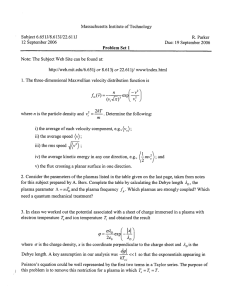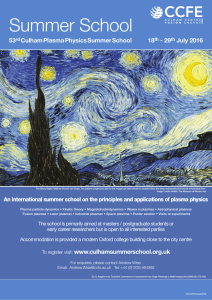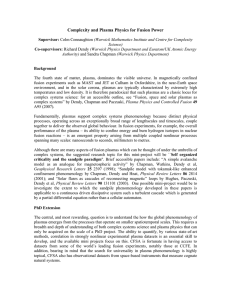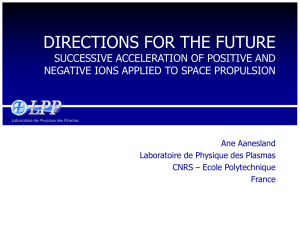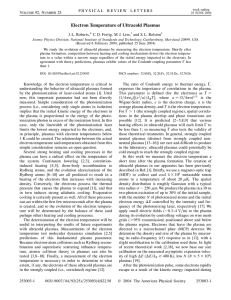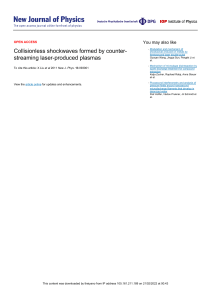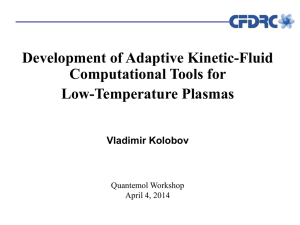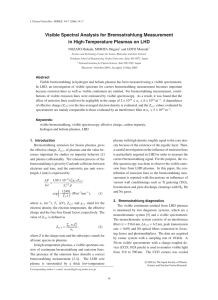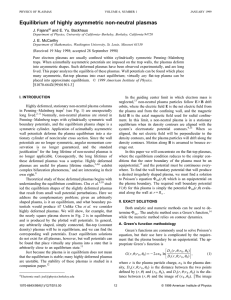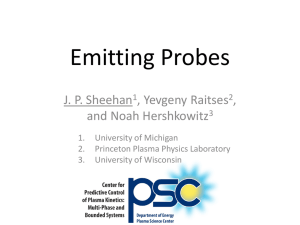Massachusetts Institute of Technology Subject 6.651J/8.613J/22.611J R. Parker
advertisement
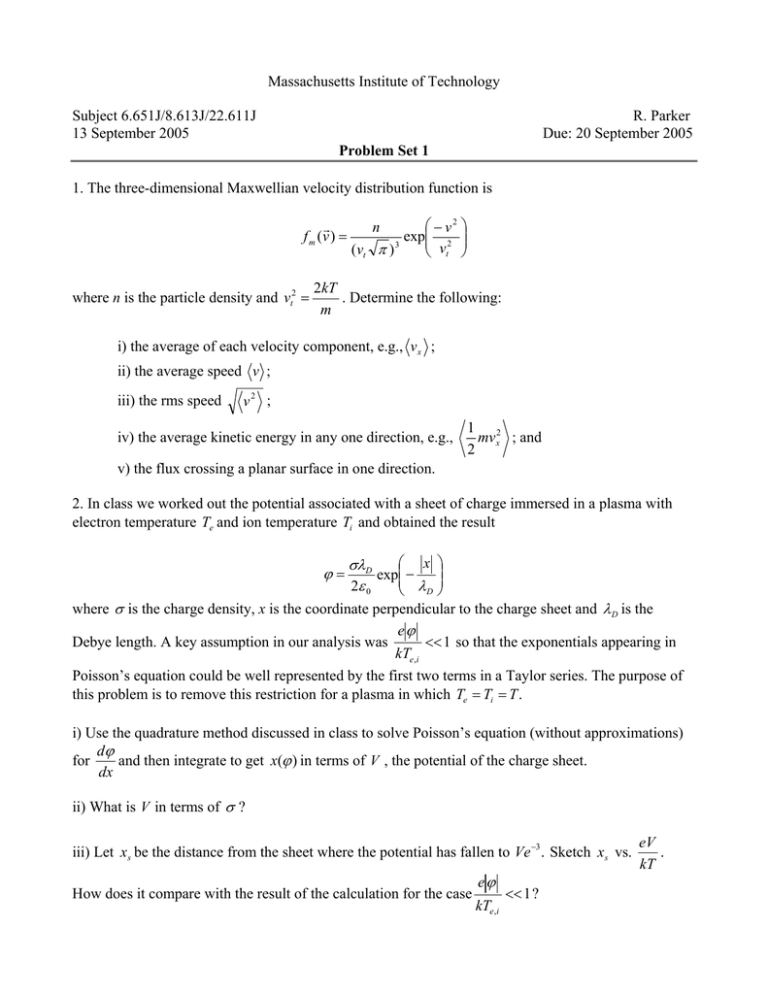
Massachusetts Institute of Technology Subject 6.651J/8.613J/22.611J 13 September 2005 R. Parker Due: 20 September 2005 Problem Set 1 1. The three-dimensional Maxwellian velocity distribution function is r f m (v ) = where n is the particle density and vt2 = ⎛ − v2 ⎞ exp⎜⎜ 2 ⎟⎟ (vt π ) 3 ⎝ vt ⎠ n 2kT . Determine the following: m i) the average of each velocity component, e.g., v x ; ii) the average speed v ; iii) the rms speed v2 ; iv) the average kinetic energy in any one direction, e.g., 1 2 mvx ; and 2 v) the flux crossing a planar surface in one direction. 2. In class we worked out the potential associated with a sheet of charge immersed in a plasma with electron temperature Te and ion temperature Ti and obtained the result ⎛ x ⎞ σλD ⎟ exp⎜⎜ − ⎟ 2ε 0 ⎝ λD ⎠ where σ is the charge density, x is the coordinate perpendicular to the charge sheet and λ D is the eϕ << 1 so that the exponentials appearing in Debye length. A key assumption in our analysis was kTe,i Poisson’s equation could be well represented by the first two terms in a Taylor series. The purpose of this problem is to remove this restriction for a plasma in which Te = Ti = T . ϕ= i) Use the quadrature method discussed in class to solve Poisson’s equation (without approximations) dϕ for and then integrate to get x(ϕ ) in terms of V , the potential of the charge sheet. dx ii) What is V in terms of σ ? iii) Let x s be the distance from the sheet where the potential has fallen to Ve −3 . Sketch x s vs. How does it compare with the result of the calculation for the case eϕ kTe,i << 1 ? eV . kT 3. A spherical ball of plasma consists of cold (Te = Ti = 0) electrons and singly charged ions with r uniform density, ne = ni = n0 . The sphere of electrons is perturbed a distance δ from its equilibrium position, i.e., where the electron sphere would coincide with that of the ions. Find the frequency at which the electron sphere oscillates. (Note: one particular form of a nearly spherical plasma occurs naturally and is known is known as “ball lightning”.) 4. Consider the parameters of the plasmas listed in the table below, taken from notes for this subject prepared by Prof. A. Bers. Complete the table by calculating the Debye length λ D , the plasma parameter Λ = nλ3D and the plasma frequency f p . Which plasmas are strongly coupled? Which need a quantum mechanical treatment? Plasmas Weakly ionized Ionosphere, D layer 70 km Gas discharge, weak current Gas discharge, strong current MHD energy convertor Strongly ionized Interstellar gas Solar wind Ionosphere, F2 layer 250 km Solar corona (RO ~1.5) Tokamaks Alkali plasmas – surface ionization Laser plasmas Nuclear explosions Magnetosphere of pulsars Dense plasmas Electrons in metals Interior of stars Interior of white dwarfs Note: Te in °K, ne in m-3. Log10ne Log10Te 9 2.5 17 4 21 5 22 3 0 6.5 11.5 3.5 5 3 13 20 18 6.5 8 3 25 26 18 5 6 16 29 33 2.5 7.5 38 7 λD(m) Λ fp(Hz) Strongly coupled? QM?
